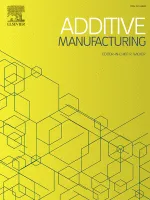Laser-based powder bed fusion (LPBF) is a manufacturing process that allows for creating materials with local variations in properties and alloys. One promising technique being researched is the shaping of the laser beam used in the process. Traditionally, a Gaussian laser beam profile is used, which has a high energy peak in the center and strong energy gradients. An alternative is the point-ring beam profile, where the laser energy is split between a central spot and an outer ring.
This study uses numerical simulations to explore how different beam shapes (Gaussian vs. point-ring) affect the melting process, including melt-pool shapes, surface temperatures, evaporation, and material flow in single melt tracks. The simulations are done with a sophisticated particle-based computational model and compared to experimental data, revealing that both beam size and shape significantly influence the results. For instance, different beam profiles lead to variations in how energy is distributed across the melt pool, affecting evaporation and surface tension forces.
The findings suggest that both the size and shape of the laser beam need to be carefully controlled to achieve desired outcomes in the LPBF process, highlighting the complex relationship between energy density, distribution, and melt-pool dynamics.
